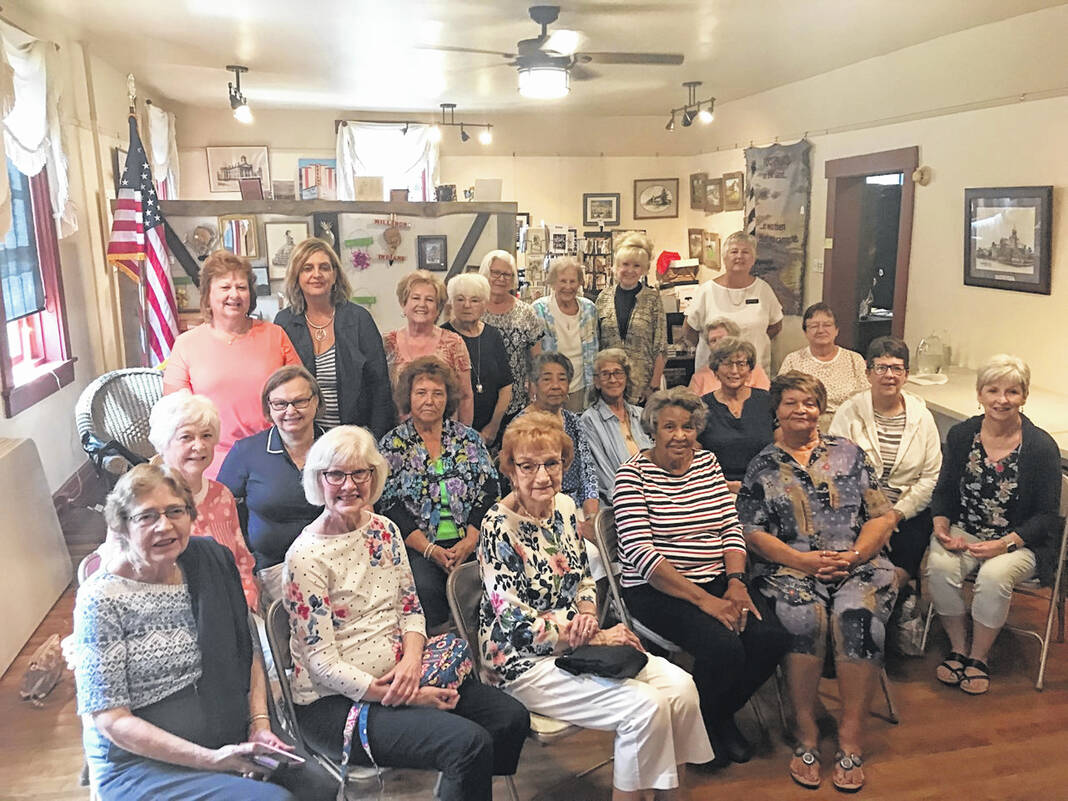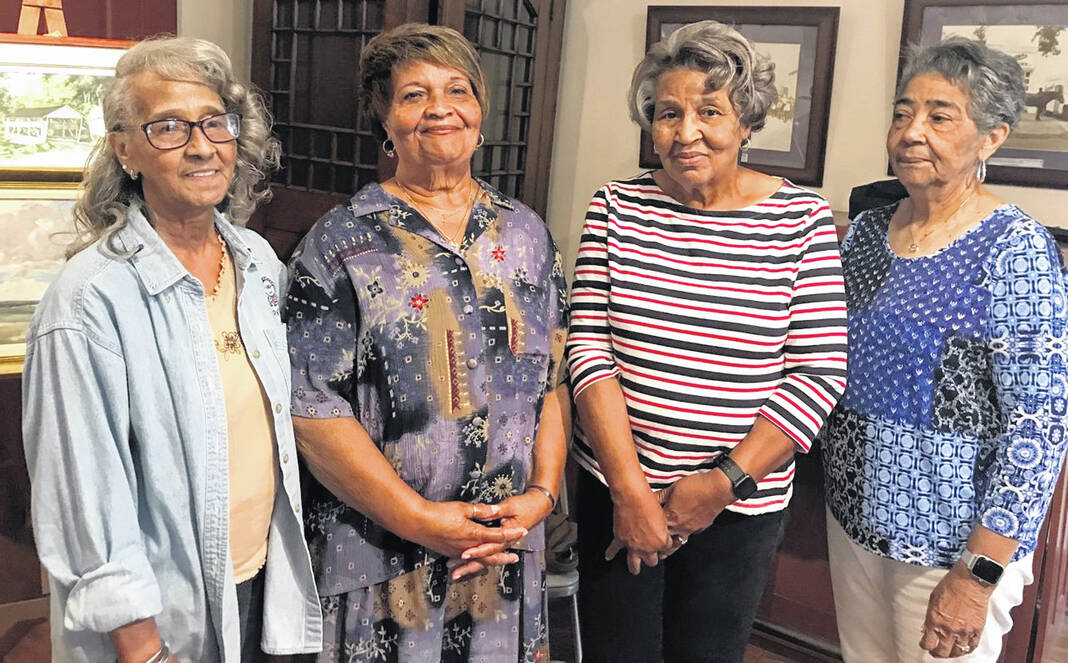
Attending Alpha Delta Chapter members of Delta Kappa Gamma with the marchers of the Marching Mothers.
Submitted photos

Daughters of organizers of Marching Mothers and marchers: (right to left) Joyce Clemons Kitterell, daughter of Gertrude Clemons and child named in Clemons in case, Eleanor Curtis Cumberland, daughter of Imogene Curtis, Myra Cumberland Phillips, daughter Zella Mae Cumberland, and Teresa Williams, daughter of Sallie Williams.
Submitted photos
Editor’s note: This story has been provided to recognize Black History Month.
This past June, members of Alpha Delta Chapter of Delta Kappa Gamma of Washington Court House made their annual summer outing for a presentation of the Marching Mothers at the Highland House Museum in Hillsboro, which is part of the Highland County Historical Society.
Chapter members watched a video and viewed displays presenting the story of the Marching Mothers, and met the women who were daughters of the women who organized this significant civil rights movement in Ohio that led to an Ohio Supreme Court Case over segregation after Brown versus the Board of Education in 1954. Brown Versus the Board of Education made segregation illegal.
In 1954, the high school in Hillsboro was desegregated. However, the black children in grades 1 through 8 were forced to attend Lincoln School — a building that was in poor condition for the safety and health of the children with faulty electricity and plumbing. In this school there were not enough rooms to house the grades separately, resulting in more than one grade level in too few rooms. The students were not provided adequate supplies, enough books or books that were in good condition or up to date.
On July 5, 1954, county engineer Phillip Partridge, who thought segregation was wrong, broke into Lincoln School and set it on fire to end the segregation. Partridge turned himself in so the black community would not be blamed and went to jail. The Hillsboro Board of Education chose to repair Lincoln School instead of desegregating. The repairs did nothing to improve the conditions at the school.
On Sept. 9, 1954, African-American mothers came together led by the activist mother Imogene Curtis, Gertrude Clemons, Elsie Steward Young, Sally Williams, and Zella May Cumberland, who decided they were no longer going to send their children to the inadequate Lincoln school any longer. On Sept. 9, 1954, a large group of mothers and their children marched to one of the elementary schools where the white children went to school — Webster Elementary School. The other elementary school where only white children attended was Washington Elementary.
Every morning the black children and the mothers were turned away, but they marched to school every morning, thus being called the Marching Mothers. The mothers and their children went back to their homes where the mothers taught their children with help of white Quaker teachers who had heard of their cause and came to their aid. The Hillsboro Board Education’s response was to threaten the mothers legally for not sending their children to Lincoln school, and to rezone the school district to eliminate the black community from the schools where white children attended.
On Sept. 22, 1954, the Hillsboro Board of Education was sued for rezoning the school system in order to segregate. Joyce Clemons, the daughter of Gertrude Clemons, was chosen to be the child to be named in the case. This cause had caught the attention of Thurman Marshall, who had won the Brown vs. the Board of Education case, and Marshall sent the attorney Constance Baker Motely to argue the Hillsboro case for desegregation. The National Association for the Advancement of Colored People (NAACP) also sent assistance to the Marching Mothers’ cause. Clemons vs. the Board of Education of Hillsboro was not a short ordeal. By the spring of 1956, the case had been in the US Court of Appeals, 6th Circuit, and the Ohio Supreme Court. Meanwhile the mothers and the children marched every school day to the white elementary schools, regardless of the weather, to be turned away every day for two years.
On April 2, 1956, the Ohio Supreme Court rejected Hillsboro’s further attempts to block desegregation. After this action of the Ohio Supreme Court, the Ohio Board of Education threatened to withhold all state funding to the Hillsboro schools if the board did not integrate. The board voted to integrate the schools. By April 17, 1956, the black children in Hillsboro began to attend Webster Elementary School, and the school board sold the Lincoln school. By September 1956 all the schools in Hillsboro were integrated.
To hear and see the complete story, and the museum’s display of the story and how the story continued after desegregation, it is well worth the trip to Highland House in Hillsboro. The Alpha Delta Chapter is in hopes that you have learned some Ohio history from our visit as we observe Black History Month this February.
The Alpha Delta Chapter of Washington Court House is a member of the Ohio State Organization of the Delta Kappa Gamma International, which promotes professional and personal growth of women educators and excellence in education.

